| Photojournal
- 25
August 2006
Party in Port Hardy
After getting back from my trip to San Josef Beach, I still had a few hours of daylight left, so I headed up to Port Hardy. I'd heard of Port Hardy fifteen years or so back, when I was doing a fair amount of scuba diving; the diving in the area was widely regarded as superb. This is unsurprising, because a whole lot of water moves past this area (going from the Pacific into the Georgia Strait) with each tide. This means that filter-feeding organisms (such as coral) get a rich, steady supply of nutrients. And these organisms are near the bottom of the food chain, so lots of sea life is to be found in these parts.
Anyhow, I never got to Port Hardy as a diver, but even without going diving I felt it would be worth a visit. The town, though, turned out to be not-so-different from Port McNeill or from any other small coastal town on the island, at least to my just-there-for-a-few-hours eyes. (I'm sure that if I stayed there for a month, and stayed in another such town for a month, I'd find plenty of differences.)
After driving around for a short while I found a waterfront park at what seemed to be the port part of town. The first thing that struck me was the shape of the hills on the land across the water: there was an isolated cliff or steep section on otherwise fairly gently-sloping hills. The lighting on the terrain was interesting as well, with small, sharply-defined clouds casting shadows with sunlight coming in between them. The whole scene seemed a bit disjointed to me.
|
|
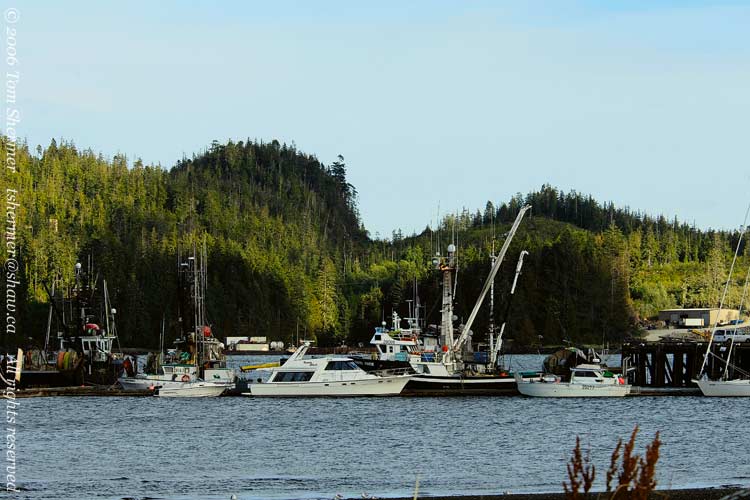 |
I took a few shots of it with my telephoto, and thought about putting the wide-angle on so that I could capture a wider section of the hills, but decided against it when the lighting changed.
So I poked around the waterfront. The park I was on had a grass lawn, with the shore area (a rock, seaweed, and muddy beach sort of affair) sectioned off by a small seawall and a short fence that consisted of a chain occasionally supported by a metal post. I took a walkway along the fence and eventually came to a gap where access down to the shore area was relatively easy. So down I went.
So far, I'd only seen gulls and crows down on the foreshore. Although my gull identification skills aren't great, I could tell that there were at least two and probably three gull species about, just from the different shapes and sizes of the birds.
We get two smallish species of white-headed gulls out this way: Mew Gull and Ring-billed Gull. This first fellow is a Mew. |
|
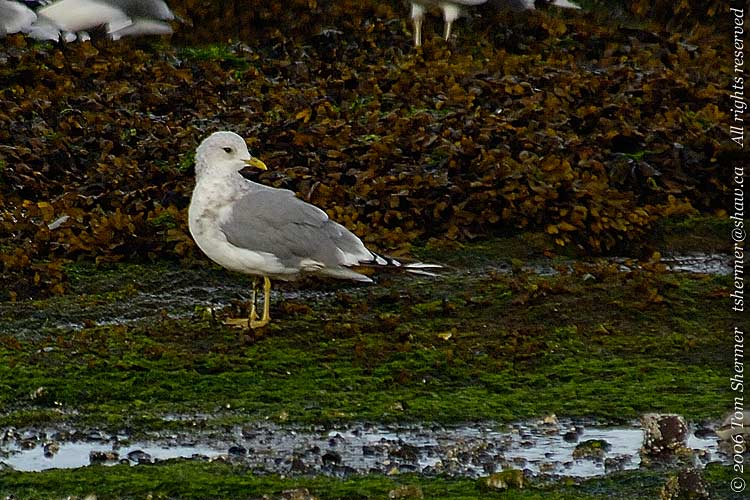 |
By the way, I'd like to thank my pals Ilya and Carlo for helping me with the identifications in this entry...I would've had a few wrong without them.
Here's another Mew Gull. You should be able to tell that the fellows in the background, who are California Gulls, are quite a bit larger. So here, at least, it's pretty clear that there are at least two species. |
|
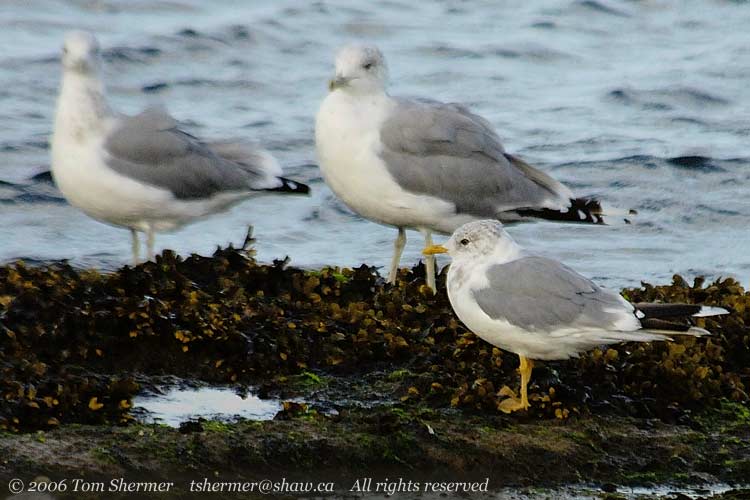 |
| Here's what an in-focus California Gull looks like. |
|
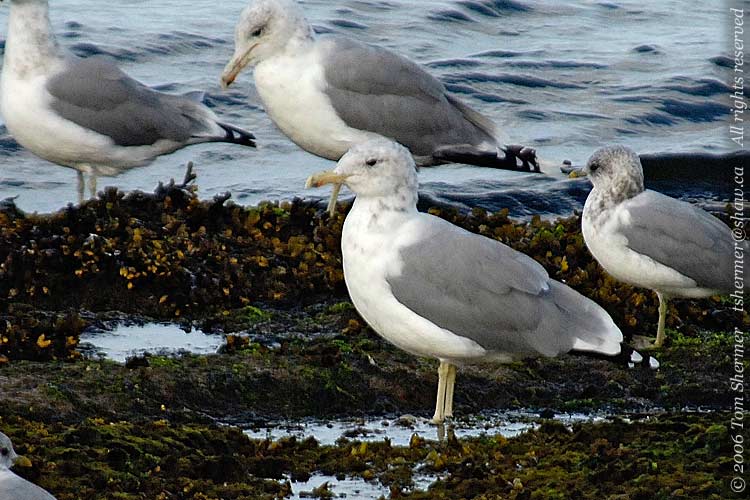 |
The next gull I zeroed in on was a juvenile, showing the mottled brown coloration that characterizes young gulls. I knew it was probably the same species as one of the other gulls that I'd seen, and it was larger than the Mew Gulls, so I figured it was a California. It turns out, by some strange accident, that I was right.
|
|
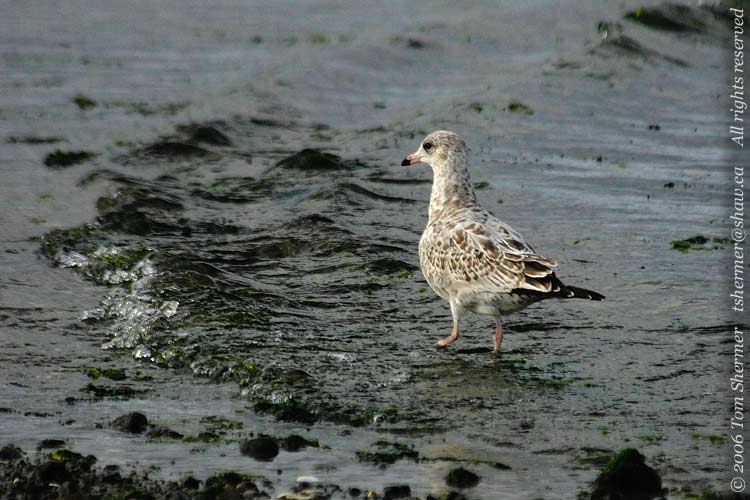 |
At this point I heard a gentle fluting that distracted me from my puzzling over the gulls. The sound was unmistakably a shorebird of some sort. I hadn't seen any shorebirds out here, but a quick look around the rocks netted me three yellowlegs.
I thought that they were Lesser Yellowlegs, but later my friends set me straight. These three were Greaters. There were fun to watch, and they even joined the act and watched me for a while. At a couple of points during our time together, the sun poked through the clouds, and I was able to get some nicely-lit photos of them. |
|
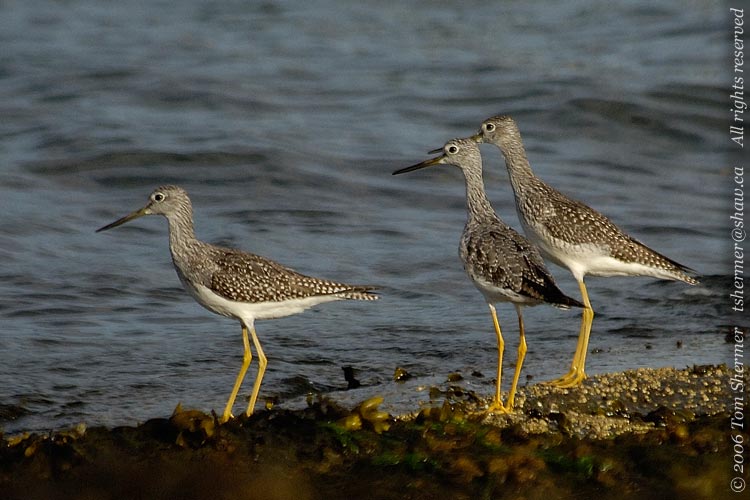 |
I find yellowlegs' appearance and motions to be both comical and elegant at the same time. Their white eye-rings give me the impression that they are perpetually surprised or alert. Maybe there's an evolutionary advantage in that.
I got lucky, and as I had my camera on them, they up and flew a short ways down the shore. |
|
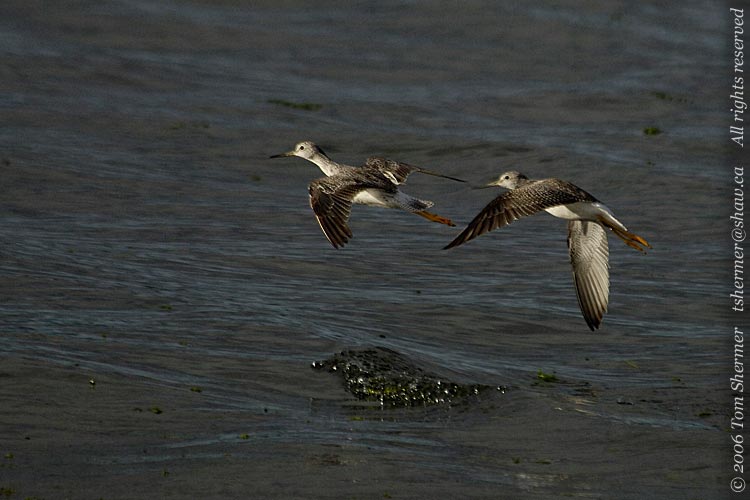 |
| With the yellowlegs now a bit more distant, I walked down the shore towards the congregation of gulls. I found a dead crab in the seaweed, and took a few shots because I liked the contrasting forms and colors. |
|
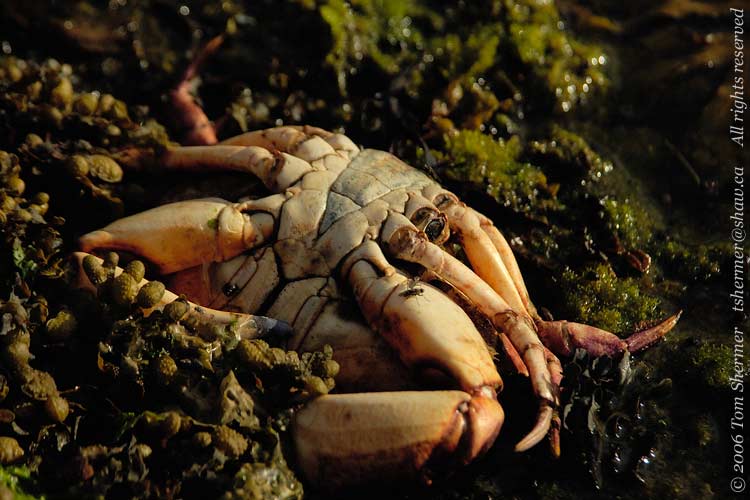 |
| But as I was taking the shots, I noticed some motion and discerned a pair of flies on the crab's pincer. The flies became my subject, and I took several shots of them. I wondered what they were doing there and just what a fly would be thinking as it walked across the shell of a dead crab. |
|
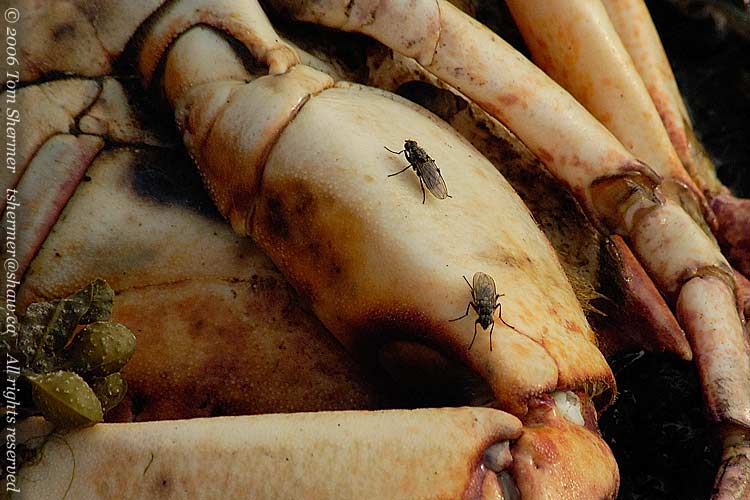 |
Were they eating bacteria or plankton or something off the shell? Were they sniffing around for the source of the odor of decay? Were they attracted to the color? Or was it just a convenient place to pull over to make a few calls on their tiny cel phones?
They must've liked it there on the crab, because once they finished their phone calls, they hopped over to the other side of the carcass and several of their friends quickly converged on the spot. Apparently, "dead crab" is cause for a major fly party. Fly fun, fly frivolity, and fly frolic followed. |
|
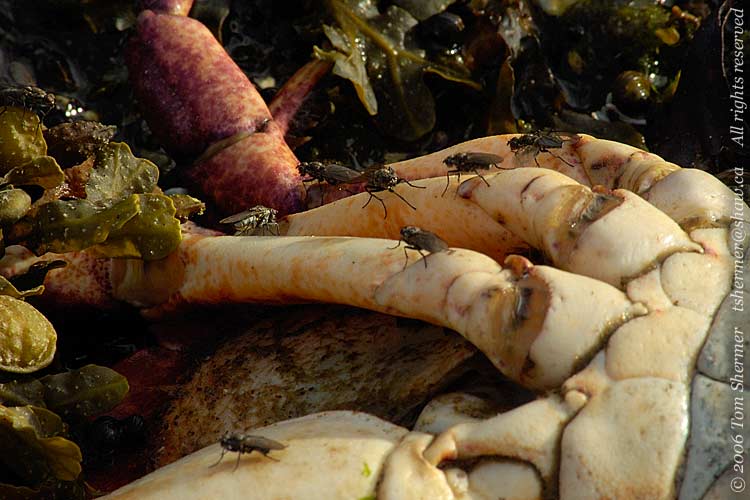 |
This mainly consisted of walking around, hopping from one spot to another, and rubbing their front legs together, but that's what passes for a good time if you're a fly.
Sometimes I'm glad I'm not a fly.
After having my fill of the party, I looked up towards the seawall and found a familiar sight: a Semipalmated Plover was standing there, amongst some small rocks. He reminded me of my adventure on the windswept beach earlier that afternoon. It just goes to show that you don't necessarily need to go way off into the wilds to see neat species; sometimes they're right up in the middle of civilization.
|
|
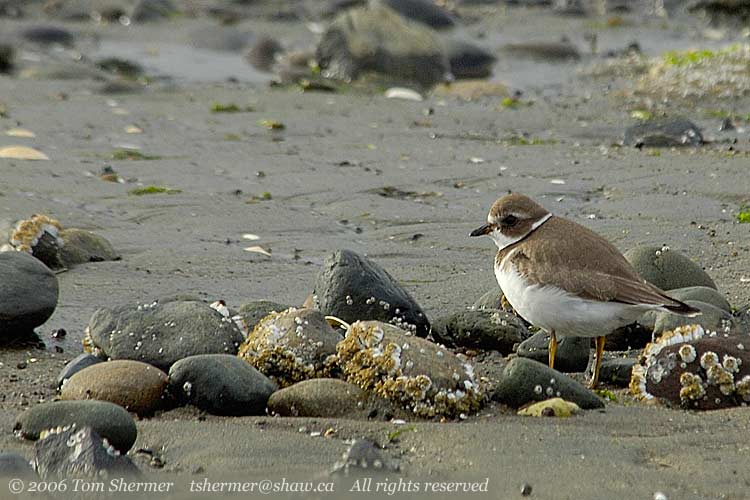 |
Not that I regretted one moment of going out to San Josef, though.
I had made it back close to the gulls again, and found this smallish fellow on the near side of the little flock. This guy is our other small gull, a Ring-billed Gull. He's close in size to the Mew Gull but with different bill and leg coloration (and a few other different field marks). |
|
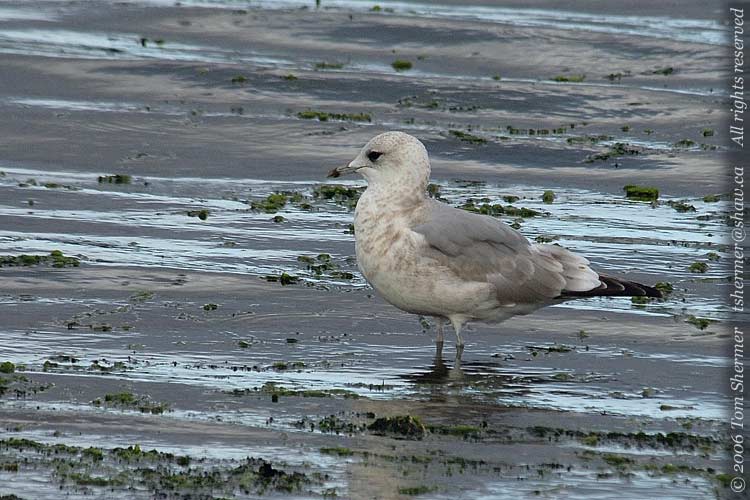 |
| This juvenile bird is also a Ring-billed Gull. |
|
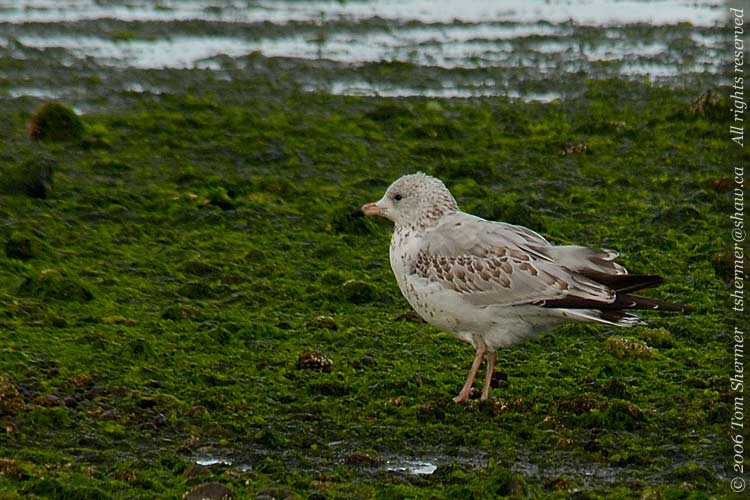 |
| But he must've thought he was a goose, because he lowered his head, raised his wings, and charged a short distance; this is a maneuver that I've quite frequently seen in (presumably angry) geese before. Generally, when geese do this, they're charging another bird. |
|
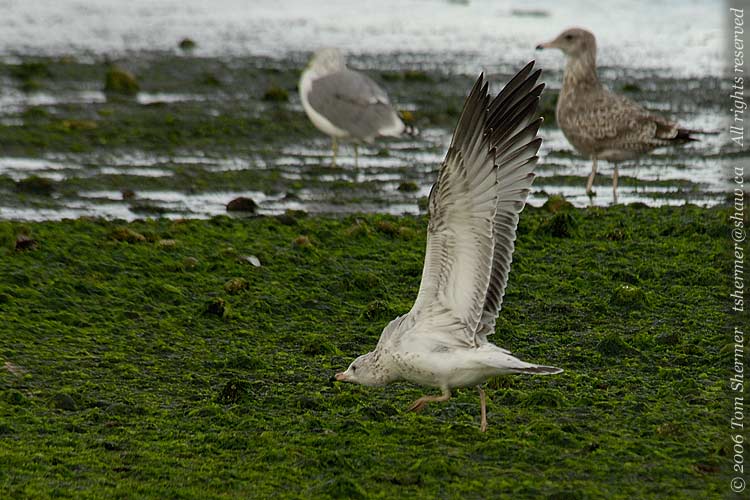 |
But there wasn't another bird where this gull was headed. Maybe it was an abortive take-off attempt, and he wasn't really pretending to be a goose.
I tried to make sure that I got shots of all of the different types of gulls out there, and right as I had decided that I probably had them all, I found a California Gull who had found a small crab in the mud. In this photo, it's a little hard to tell, but he's holding it in his mouth. |
|
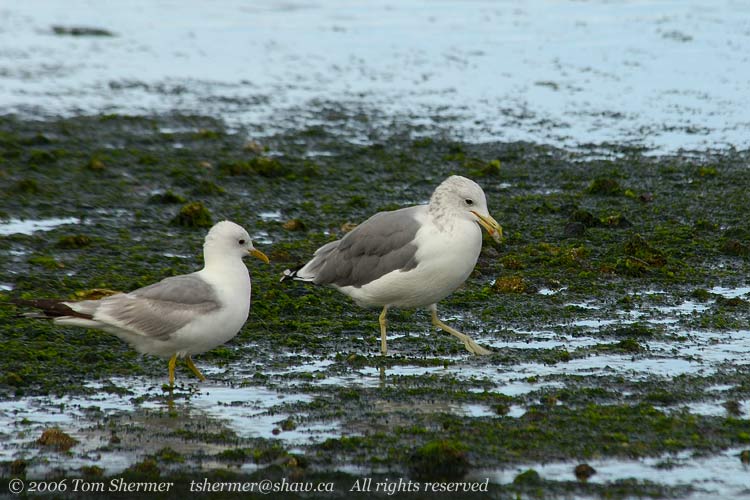 |
His companion, on the left, appears to be a Mew Gull.
The rocks that led up to the seawall and the park where I had started my walk had an attractive texture and look to them. I tried to shoot them, but ended up having a difficult time finding camera angles and compositions that did them justice. I walked around them quite a bit and ended up shooting only two different shots. One of them turned out pretty well.
|
|
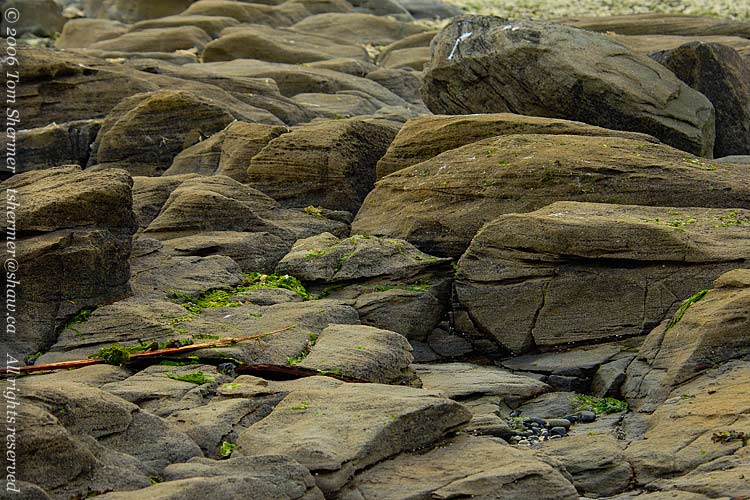 |
The other, a much tighter shot, was decidedly lacklustre. It's interesting how different shooting rocks is from shooting birds.
I could go into a lecture on why that is so, and I was starting to go over such a lecture in my head when another subject caught my attention. An eagle was flying by, a short ways out over the water. At first I took shots zoomed in as far as Ithe lens goes, which is my normal approach: get as much detail on the critter as I can.
|
|
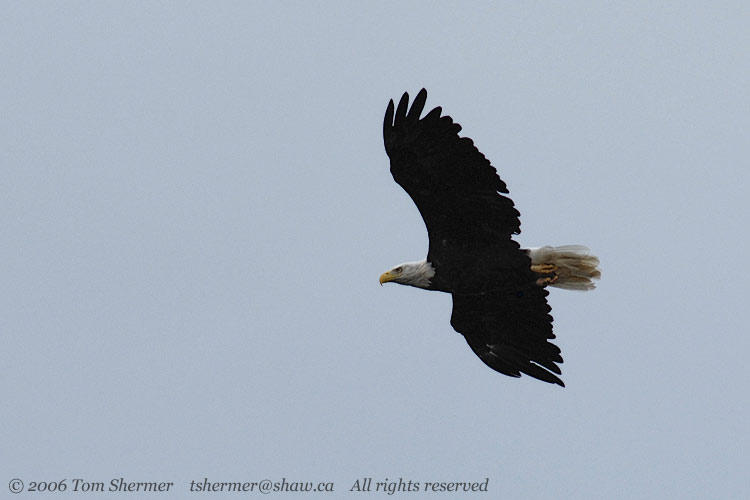 |
| But then, since I had just been thinking more about composition, I decided to back the lens off and see if I could get some shots of the bird in the sky, with the sky being more of a compositional element. Here are two of my efforts in that direction. |
|
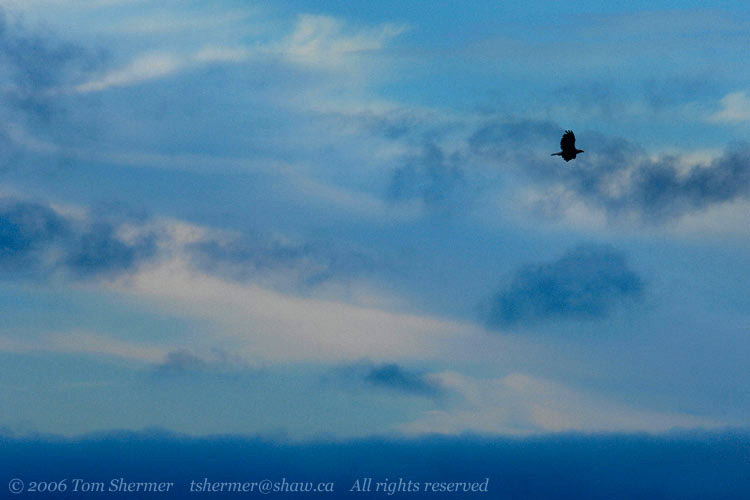 |
| |
|
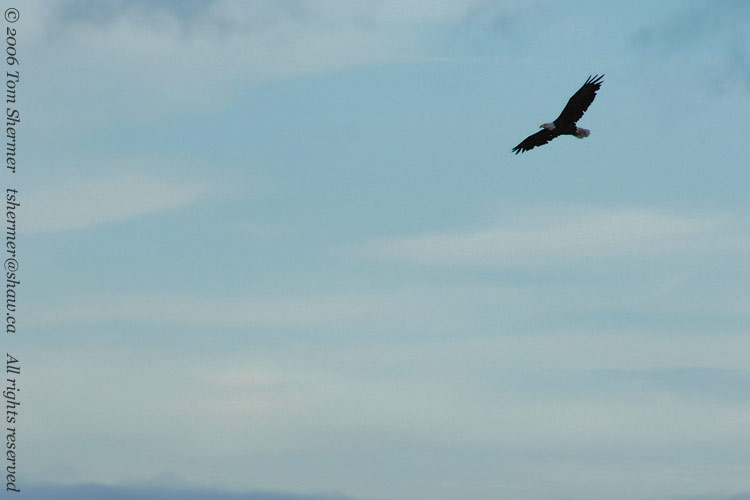 |
The eagle stayed around for quite some time, and I ended up tiring of the game before he did. It was nearing 7pm at this point, and not only was the light fading, but dinner was calling. So I got in my car and drove back to Port McNeill.
That was my last day of photography on my trip to the north part of the island. The next day I spent driving and taking the ferry back home; it was fairly cloudy that day and no photo-ops jumped out at me.
Meet me at the crab,
Tom
|
|
|